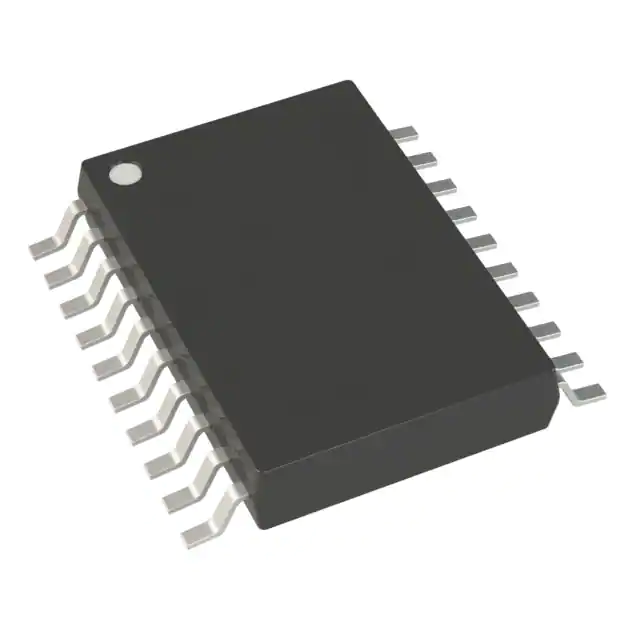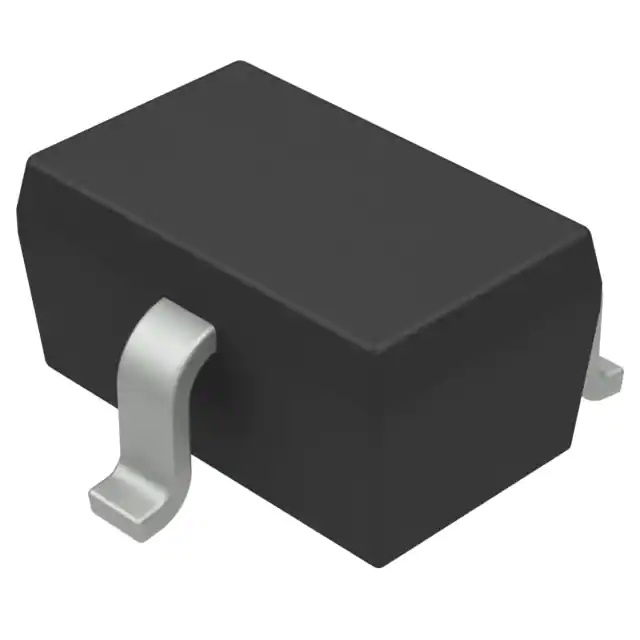- Integrated Circuits (ICs)
- Audio Special Purpose
- Clock/Timing - Application Specific
- Clock/Timing - Clock Buffers, Drivers
- Clock/Timing - Clock Generators, PLLs, Frequency Sy…
- Clock/Timing - Delay Lines
- Clock/Timing - IC Batteries
- Clock/Timing - Programmable Timers and Oscillators
- Clock/Timing - Real Time Clocks
- Data Acquisition - ADCs/DACs - Special Purpose
- Data Acquisition - Analog Front End (AFE)
- Data Acquisition - Analog to Digital Converters (AD…
- Data Acquisition - Digital Potentiometers
- Data Acquisition - Digital to Analog Converters (DA…
- Data Acquisition - Touch Screen Controllers
- Embedded - CPLDs (Complex Programmable Logic Device…
- Embedded - DSP (Digital Signal Processors)
- Embedded - FPGAs (Field Programmable Gate Array)
- Embedded - FPGAs (Field Programmable Gate Array) wi…
- Embedded - Microcontrollers
- Embedded - Microcontrollers - Application Specific
- Embedded - Microprocessors
- Embedded - PLDs (Programmable Logic Device)
- Embedded - System On Chip (SoC)
- Interface - Analog Switches - Special Purpose
- Interface - Analog Switches, Multiplexers, Demultip…
- Interface - CODECs
- Interface - Controllers
- Interface - Direct Digital Synthesis (DDS)
- Interface - Drivers, Receivers, Transceivers
- Interface - Encoders, Decoders, Converters
- Interface - Filters - Active
- Interface - I/O Expanders
- Interface - Modems - ICs and Modules
- Discrete Semiconductor Products
- Diodes - Bridge Rectifiers
- Diodes - Rectifiers - Arrays
- Diodes-Rectifiers-Single
- Diodes - RF
- Diodes - Variable Capacitance (Varicaps, Varactors)…
- Diodes - Zener - Arrays
- Diodes - Zener - Single
- Power Driver Modules
- Thyristors - DIACs, SIDACs
- Thyristors - SCRs
- Thyristors - SCRs - Modules
- Thyristors - TRIACs
- Transistors - Bipolar (BJT) - Arrays
- Transistors - Bipolar (BJT) - Arrays, Pre-Biased
- Transistors - Bipolar (BJT) - RF
- Transistors - Bipolar (BJT) - Single
- Transistors - Bipolar (BJT) - Single, Pre-Biased
- Transistors - FETs, MOSFETs - Arrays
- Transistors - FETs, MOSFETs - RF
- Transistors - FETs, MOSFETs - Single
- Transistors - IGBTs - Arrays
- Transistors - IGBTs - Modules
- Transistors - IGBTs - Single
- Transistors - JFETs
- Transistors - Programmable Unijunction
- Transistors - Special Purpose
- Diodes - Rectifier - Module
- Diodes - TVS
- Transistors - General Purpose
- Thyristor Surge Suppressors
- Diodes
- MOSFETs - Low Voltage Power
- MOSFETs-Small Signal
- Circuit Protection
- Thermal Cutoffs (Thermal Fuses and Breakers)
- TVS - Varistors, MOVs
- TVS - Thyristors
- TVS - Surge Protection Devices (SPDs)
- TVS - Mixed Technology
- TVS - Diodes
- Surge Suppression ICs
- PTC Resettable Fuses
- Lighting Protection
- Inrush Current Limiters (ICL)
- Ground Fault Circuit Interrupter GFCI
- Gas Discharge Tube Arresters (GDT)
- Fuses
- Fuseholders
- Electrical, Specialty Fuses
- Circuit Breakers
- Accessories
- Inductors, Coils, Chokes
- Isolators
- Resistors
- Relays
- Capacitors
- Ceramic Capacitors
- Tantalum Capacitors
- Trimmers, Variable Capacitors
- Thin Film Capacitors
- Tantalum - Polymer Capacitors
- Silicon Capacitors
- Niobium Oxide Capacitors
- Mica and PTFE Capacitors
- Film Capacitors
- Electric Double Layer Capacitors (EDLC), Supercapac…
- Capacitor Networks, Arrays
- Aluminum Electrolytic Capacitors
- Aluminum - Polymer Capacitors
- Accessories
- RF/IF and RFID
- Attenuators
- Balun
- RF Accessories
- RF Amplifiers
- RF Demodulators
- RF Detectors
- RF Directional Coupler
- RF Front End (LNA + PA)
- RF Misc ICs and Modules
- RF Mixers
- RF Modulators
- RF Power Controller ICs
- RF Power Dividers/Splitters
- RF Receiver, Transmitter, and Transceiver Finished …
- RF Receivers
- RF Shields
- RF Switches
- RF Transceiver ICs
- RF Transceiver Modules
- RF Transmitters
- RFI and EMI - Contacts, Fingerstock and Gaskets
- RFI and EMI - Shielding and Absorbing Materials
- RFID Accessories
- RFID Antennas
- RFID Reader Modules
- RFID Transponders, Tags
- RFID, RF Access, Monitoring ICs
- RF Antennas
- RF Circulators and Isolators
- RF Multiplexers
- Subscriber Identification Module (SIM) Cards
- Audio Products
- Sensors, Transducers
- Accessories
- Amplifiers
- Capacitive Touch Sensors, Proximity Sensor ICs
- Color Sensors
- Current Transducers
- Dust Sensors
- Encoders
- Float, Level Sensors
- Flow Sensors
- Force Sensors
- Gas Sensors
- Humidity, Moisture Sensors
- Image Sensors, Camera
- IrDA Transceiver Modules
- Magnetic Sensors - Compass, Magnetic Field (Modules…
- Magnetic Sensors - Linear, Compass (ICs)
- Magnetic Sensors - Position, Proximity, Speed (Modu…
- Magnetic Sensors - Switches (Solid State)
- Magnets - Multi Purpose
- Magnets - Sensor Matched
- Motion Sensors - Accelerometers
- Motion Sensors - Gyroscopes
- Motion Sensors - IMUs (Inertial Measurement Units)
- Motion Sensors - Inclinometers
- Motion Sensors - Optical
- Motion Sensors - Tilt Switches
- Motion Sensors - Vibration
- Multifunction
- Optical Sensors - Ambient Light, IR, UV Sensors
- Optical Sensors - Distance Measuring
- Optical Sensors - Photo Detectors - CdS Cells
- Optical Sensors - Photo Detectors - Logic Output
- Optical Sensors - Photo Detectors - Remote Receiver…
- Industrial Supplies
- Dock and Warehouse - Mirrors
- Carts and Trucks - Carts, Trucks, Jacks, and Dollie…
- Dock and Warehouse - Air Curtain Doors
- Dock and Warehouse - Dock Equipment
- Dock and Warehouse - Ladders, Steps, and Platforms
- Electrical - Cords, Wires and Accessories
- Electrical - Generators
- Electrical - Lighting Accessories
- Electrical - Lighting
- Fans - Agricultural, Dock and Exhaust
- Fans - Blowers and Floor Dryers
- Fans - Components - Motors
- Fans - Components and Accessories
- Fans - Household, Office and Pedestal Fans
- HVAC - Air Conditioners
- HVAC - Air Filters
- HVAC - Air Handlers, Furnaces
- HVAC - Air Purifiers, Dehumidifiers and Humidifiers…
- HVAC - Heaters
- HVAC - Parts and Accessories
- Janitorial and Maintenance Products
- Maintenance - Air Compressor Tools and Accessories
- Maintenance - Magnets
- Maintenance - Mats
- Office Equipment - File Cabinets, Bookcases
- Office Equipment - Food Storage and Preparation
- Office Equipment - Office Supplies
- Office Equipment - Water Fountains and Refilling St…
- Office Furniture - Partitions and Accessories
- Office Furniture - Safes, Secure Storage
- Office Furniture - Tables
- Outdoor Products - Bikes, Racks and Locks
- Outdoor Products - Canopies, Shelters and Sheds
More product categories >>
Lead-Free Perovskite Light-Emitting Diodes: Research Progress and Future Prospects
12/26/2024 12:58:23 AM
Perovskite materials, with their unique optoelectronic properties, have shown tremendous potential in applications such as solar cells, light-emitting diodes (LEDs), and photodetectors. However, the stability and environmental issues associated with traditional lead-based perovskites have limited their further development. Therefore, lead-free perovskite light-emitting diodes (PeLEDs), as a new generation of environmentally friendly luminescent materials, are becoming a hot topic of research.
1. High-Efficiency and Stable Lead-Free Perovskite LEDs
Recently, a team led by Academician Huang Wei from Northwestern Polytechnical University, in collaboration with researchers from Nanjing Tech University and Changzhou University, has made a significant breakthrough in the field of perovskite LEDs. They significantly improved the photoluminescence quantum efficiency by accelerating the radiative recombination rate, which resulted in an external quantum efficiency of over 30% for perovskite LEDs. This achievement not only demonstrates the potential of lead-free perovskite LEDs in terms of efficiency but also provides new possibilities for their application in high-end display technologies.
2. Mechanism of White Light Emission from Lead-Free Double Perovskites
The team of Yuan Kaijun and Sui Laizhi from the Dalian Institute of Chemical Physics, Chinese Academy of Sciences, used high-pressure ultrafast spectroscopy to reveal the mechanism behind the white light emission of lead-free double perovskite Cs2NaInCl6:Sb3+ crystals under high pressure. The study showed that under high pressure, the Cs2NaInCl6:Sb3+ crystals experience a phase transition, and the intensity of self-trapped excitons (STEs) in the emission significantly increases by 160 times, exhibiting white light emission after the release of high pressure. This discovery provides a new pathway for achieving broadband white light emission from a single component.
3. Strategies for Efficiency Improvement of Lead-Free Perovskite LEDs
Scientists are exploring various strategies to enhance the efficiency of lead-free perovskite LEDs. For example, by atomic-level regulation and 3D printing resin encapsulation, the luminous efficiency and super stability can be improved. In addition, by introducing antioxidants that form strong interactions with tin (II) iodide in the precursor solution, the rapid aggregation of perovskite clusters during initial crystallization can be effectively suppressed, thus promoting the formation of high-quality Sn-based perovskites and achieving high-efficiency lead-free perovskite LEDs.
4. Environmentally Friendly Lead-Free Perovskite Violet LEDs
A research team from Zhengzhou University prepared an environmentally friendly perovskite violet LED using Cs3Sb2Br9 quantum dot films as the luminescent layer, with a device external quantum efficiency of 0.206%. This progress indicates that lead-free perovskite materials have great potential in achieving high-efficiency, stable, and environmentally friendly light-emitting diodes.
5. Conclusion and Outlook
The research on lead-free perovskite light-emitting diodes is rapidly developing, with new discoveries and breakthroughs emerging continuously. With the improvement of efficiency and stability, lead-free perovskite LEDs will play an increasingly important role in future display and lighting technologies. At the same time, in-depth research on lead-free perovskite materials will also promote the development of environmentally friendly optoelectronic devices, providing technical support for achieving sustainable development.
Latest Products
-
AD9834BRUZ
Analog Devices Inc.
-
BAV99W,135
Nexperia USA Inc.
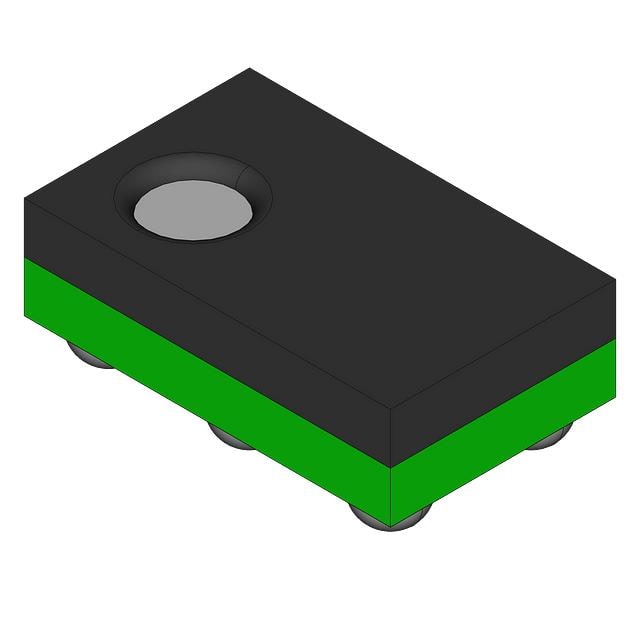
-
IP5002CX8/P135
NXP USA Inc.
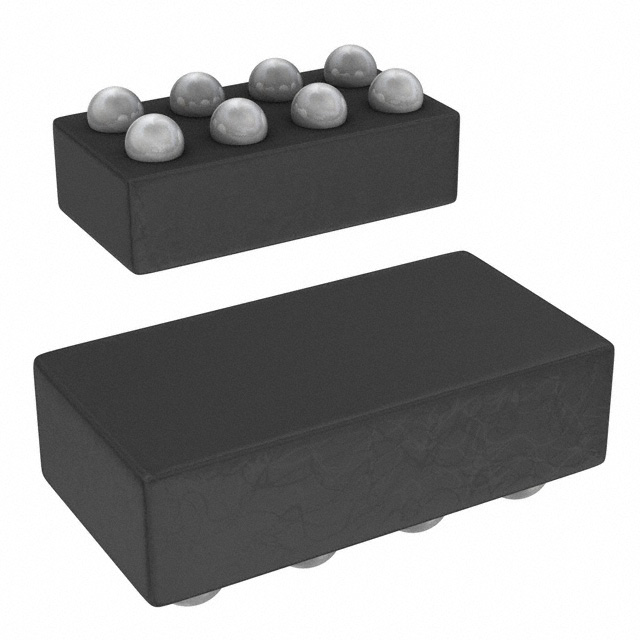
-
ADAU7002ACBZ-RL
Analog Devices Inc.
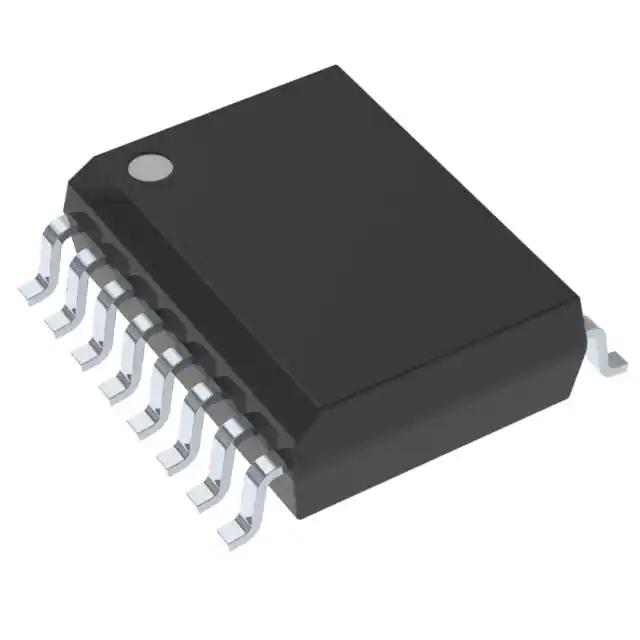
-
PGA2320IDW
Texas Instruments
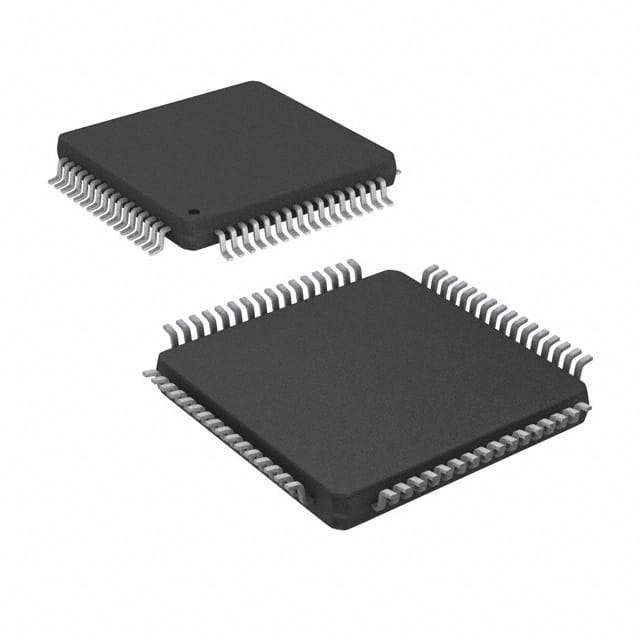
-
SRC4184IPAG
Texas Instruments
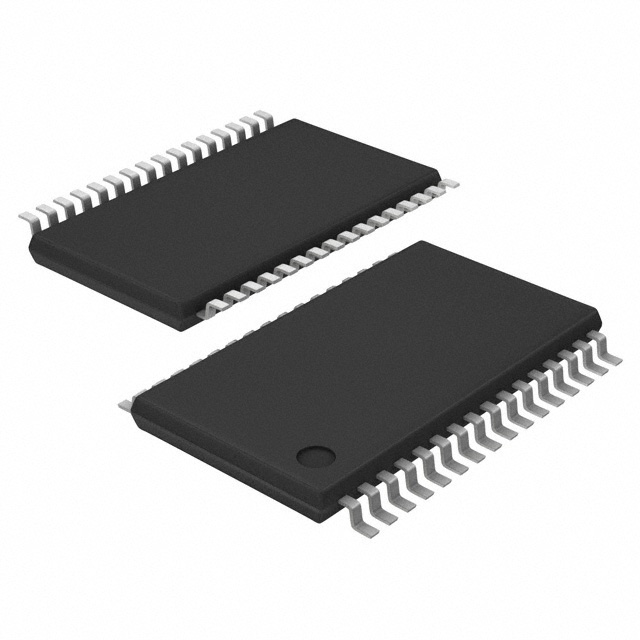
-
MUSES72320V-TE2
Nisshinbo Micro Devices Inc.
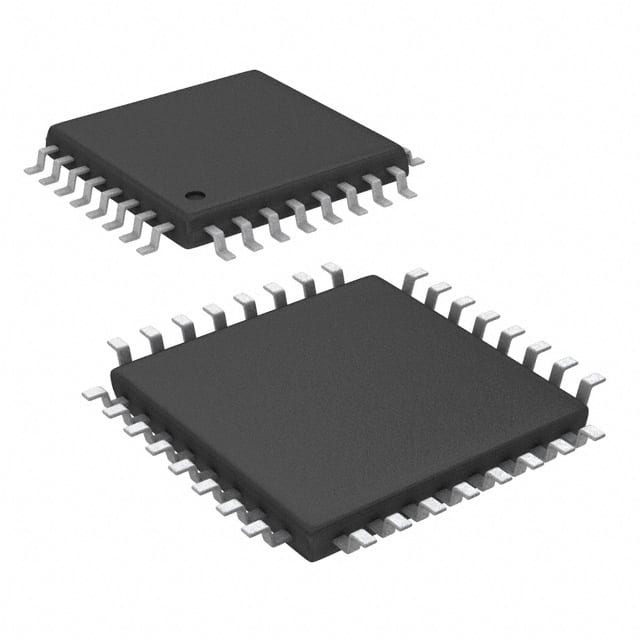
-
PCM2706CPJT
Texas Instruments

- Help you to save your cost and time.

- Reliable package for your goods.

- Fast Reliable Delivery to save time.

- Quality premium after-sale service.
 Upload BOM
Upload BOM

